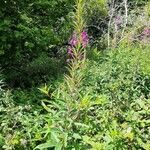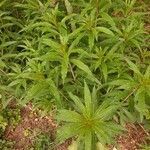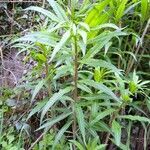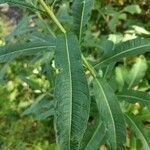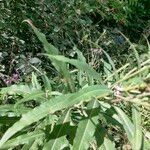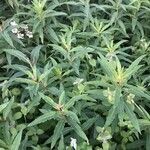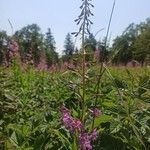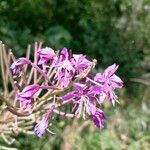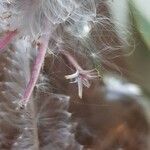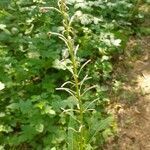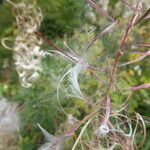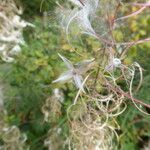Perennial from coarse, running, rhizome-like roots, erect, usually simple-stemmed, 1–3 m, puberulent in the infl, often otherwise glabrous or nearly so; lvs alternate, numerous and crowded, lanceolate or lance-linear, to 1.5(–2) dm, sessile or subsessile; racemes terminal, elongate; fls many, pink-purple (white); pet 1–2 cm, short-clawed; hypanthium not prolonged beyond the ovary; style basally hairy; stigma deeply 4-cleft; fr 3–8 cm; 2n=36, 72, 108. Many habitats, especially moist soils rich in humus, often abundant after fires; circumboreal, s. to N.J., O., n. Ill., Nebr., and N.M. June–Sept. (Chamaenerion a.; C. spicatum) Ours represent the tetraploid var. canescens A. W. Wood, in contrast to the more northern, diploid var. angustifolium.
More
It is a herb. It keeps growing from year to year. It grows up to 1.8-2.1 m but is smaller in colder regions. The stems are willowy. The leaves are narrow and arranged alternately. They are dark green above and paler underneath. The flowers are pink or purple and in racemes. The fruit are long narrow capsules. They contain many seeds and each seed has a tuft of hairs.
A flour is made from the roots and used to make flat cakes. The vigorous young shoots are cooked and eaten with butter as an asparagus substitute. The leaves are eaten raw or boiled. They are also dried and used for tea. Young flower stalks are added to salads. The pith of the large stalks is chewed. It is also used to flavour and thicken soups and stews or made into ale or vinegar.
